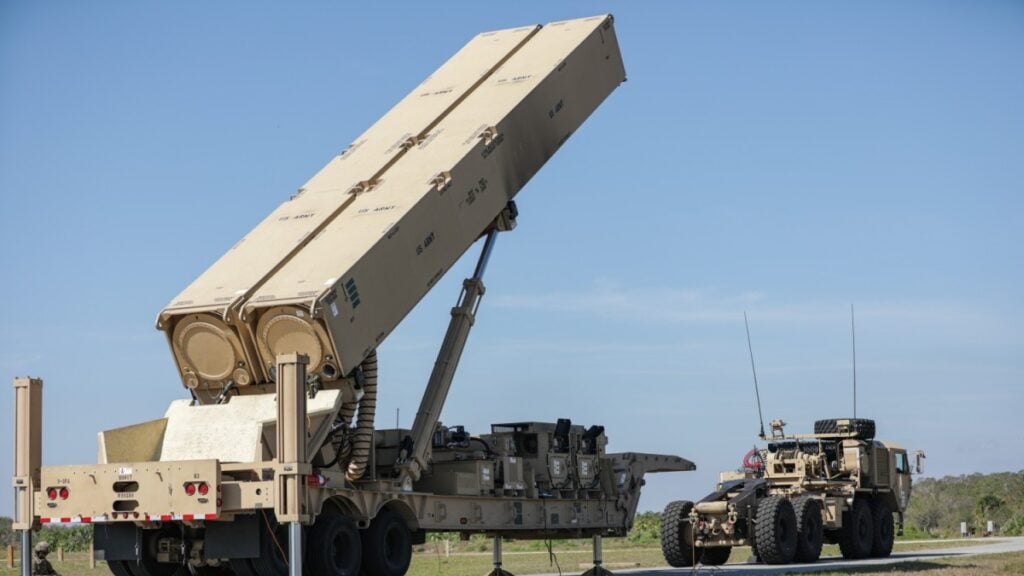A US Army Soldier lifts the hydraulic launching system on the new Long-Range Hypersonic Weapon (LRHW) during Operation Thunderbolt Strike at Cape Canaveral Space Force Station, Florida, in March 2023. (Photo Credit: Spc. Chandler Coats, U.S. Army)
WASHINGTON — As the US Army prepares to field a slew of longer-range missiles, it is standing up a new deep sensing office to help identify technology and formation needs to help soldiers with targeting, according to service chief Gen. Randy George.
The tentative plan is to stand up a deep sensing cross-functional team within the Army’s Future Command. The team’s official unveiling is expected to come later this month at a symposium in Huntsville, Ala., the four-star general told reporters today at the Mcaleese defense programs conference.
While George did not provide specifics about the establishment timeline or mandate, he said team members will be looking at ways to spin out capabilities like high-altitude balloons and stratospheric unmanned aerial vehicles to assist in targeting.
“There’s fairly inexpensive tech, and it … gets back to the sensors. You know, how that’s gonna look inside of our formation?” George said. “That’s what we’re working towards.”
When the Army stood up AFC in 2018, it included eight original CFTs — long-range precision fires, next-generation combat vehicles, future vertical lift, the network, air-and-missile defense, soldier lethality, synthetic training environment, and assured positioning, navigation and timing/space. Last year, it added a new contested logistics shop. The new deep sensing CFT will make 10 such teams.
The future CFT announcement comes as the service prepares to field a host of new, longer-range weapons like Precision Strike Missile (PrSM), a Mid-Range Capability (MRC) and eventually a new hypersonic missile. Each of those weapons are on varied fielding timelines with PrSM and MRC set for this year.
The Army and Navy have been working in tandem on Long-Range Hypersonic Weapon (LRHW) development, which the ground service dubs Dark Eagle. Over the past several years, the Army experienced a series of pre-launch test failures causing them to postpone fielding from the end of September to the end of the calendar year, and is now a question mark.
In December 2023, the head of Army acquisition, Doug Bush, told Breaking Defense, a “mechanical engineering problem” was to blame for some of those recent test failures and a service had a plan in place to correct it and potentially get the new weapon to soldiers within six months.
However, today he told an audience that he does not expect Dark Eagle testing to resume until this summer.
“Our goal is this summer to get back to the range, both [at the] advanced subsystem level with a launcher but also with a missile,” Bush said. “So far, so good. I think we are understanding where the challenges were.”




















Discussion about this post